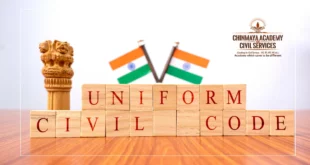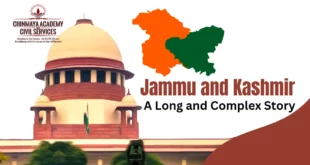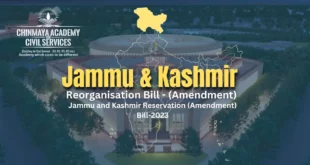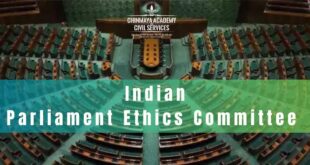Concept The Election Symbols (Reservation and Allotment) Order, 1968 is a significant legal document in Indian electoral law. It was issued by the Election Commission of India (ECI) under the authority granted by the Representation of the People Act, 1951. This order primarily deals with the reservation and allotment of …
Read More »Uniform Civil Code
A UCC would establish a single law for the entire country, governing all religious communities in personal matters such as marriage, divorce, inheritance, and adoption. In other words, the UCC is a set of rules/regulations that proposes replacing personal laws based on the scriptures and customs of each major religious …
Read More »Republic Day 2024 Tableaux
The Republic Day 2024 Parade at Kartavya Path promises a wide and lively show with themes ranging from education and empowerment to traditional arts and athletic achievements. Each tableau adds to the rich tapestry of India’s unity in diversity by capturing the distinct cultural, social, and technological characteristics of the …
Read More »The Unlawful Activities (Prevention) Act (UAPA) of 1967
The Unlawful Activities (Prevention) Act (UAPA) of 1967 is an Indian law that aims to prevent unlawful activities of individuals and associations. The law was first enacted to deal with anti-national activities and secessionist movements. The law’s main objective is to provide powers to deal with activities that threaten the …
Read More »Jammu and Kashmir: A Long and Complex Story
Jammu and Kashmir boasts a rich and complex history spanning millennia, marked by diverse rulers, religious influences, and political upheavals. Here’s a brief overview of key historical events: Ancient Times (3000 BC – 13th Century AD): Indus Valley Civilization flourished in the region, leaving behind remnants in Burzahom and Gufkral. …
Read More »The Jammu and Kashmir Reorganisation (Amendment) Bill, and the Jammu and Kashmir Reservation (Amendment) Bill, 2023
Two bills that were introduced in the Lok Sabha on July 26, 2023. The Jammu and Kashmir Reorganisation (Amendment) Bill, 2023, amends the Jammu and Kashmir Reorganisation Act, 2019, which re-organized the state of Jammu and Kashmir into two Union Territories: Jammu and Kashmir (with legislature) and Ladakh (without legislature). …
Read More »COASTAL SECURITY IN INDIA
India has a coastline of 7,516.6 km. bordering the mainland and the islands with Bay of Bengal in the East, the Indian Ocean on the South and the Arabian Sea on the West. There are nine States viz. Gujarat, Maharashtra, Goa, Karnataka, Kerala, Tamil Nadu, Andhra Pradesh, Odisha and West …
Read More »Freebies during election
The word freebie is an informal word used to refer to things given out for free or without payment by any organization, company or a state to gain the receiver’s support or favour. Constitutional Standpoint The Directive Principles of State Policy (DPSPs) envisions a welfare state which makes basic amenities …
Read More »Parliament Ethics Committee
The Parliament Ethics Committee is a grouping in the Parliament of India that is responsible for overseeing the moral and ethical conduct of its members. It was constituted in 1997, following the Presiding Officers Conference held in New Delhi in October 1996, which desired the legislatures to explore the possibility …
Read More »The Election Commission — autonomy in the crosshairs
Syllabus: Appointment to various Constitutional posts, powers, functions and responsibilities of various Constitutional Bodies. Context The Election Commission of India (ECI) has been a focal point of differences between the government and the judiciary. This time, the clash of opinions is over its appointment. SC Judgement The Supreme Court of …
Read More » Chinmaya IAS Academy – Current Affairs Chinmaya IAS Academy – Current Affairs
Chinmaya IAS Academy – Current Affairs Chinmaya IAS Academy – Current Affairs








